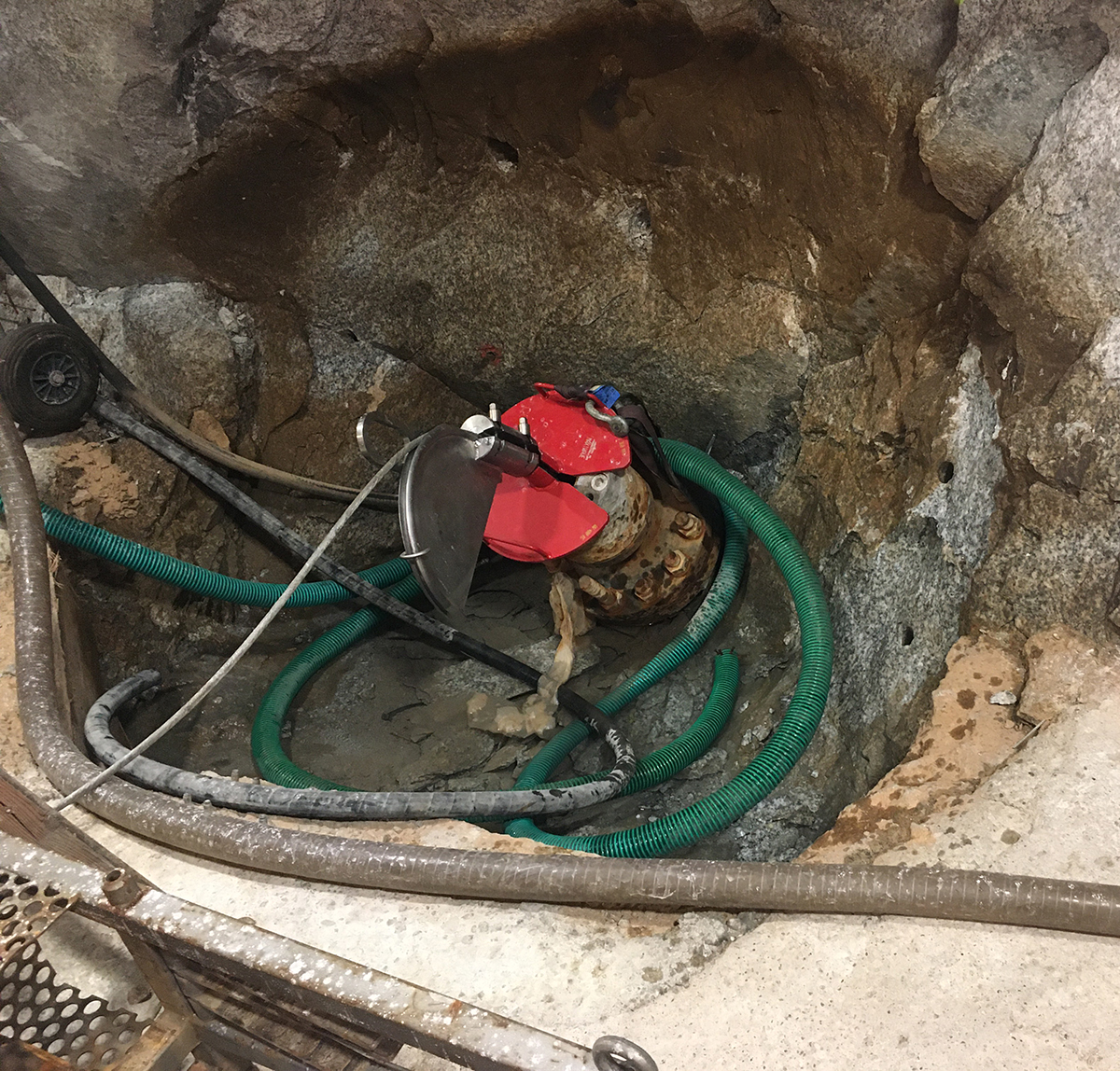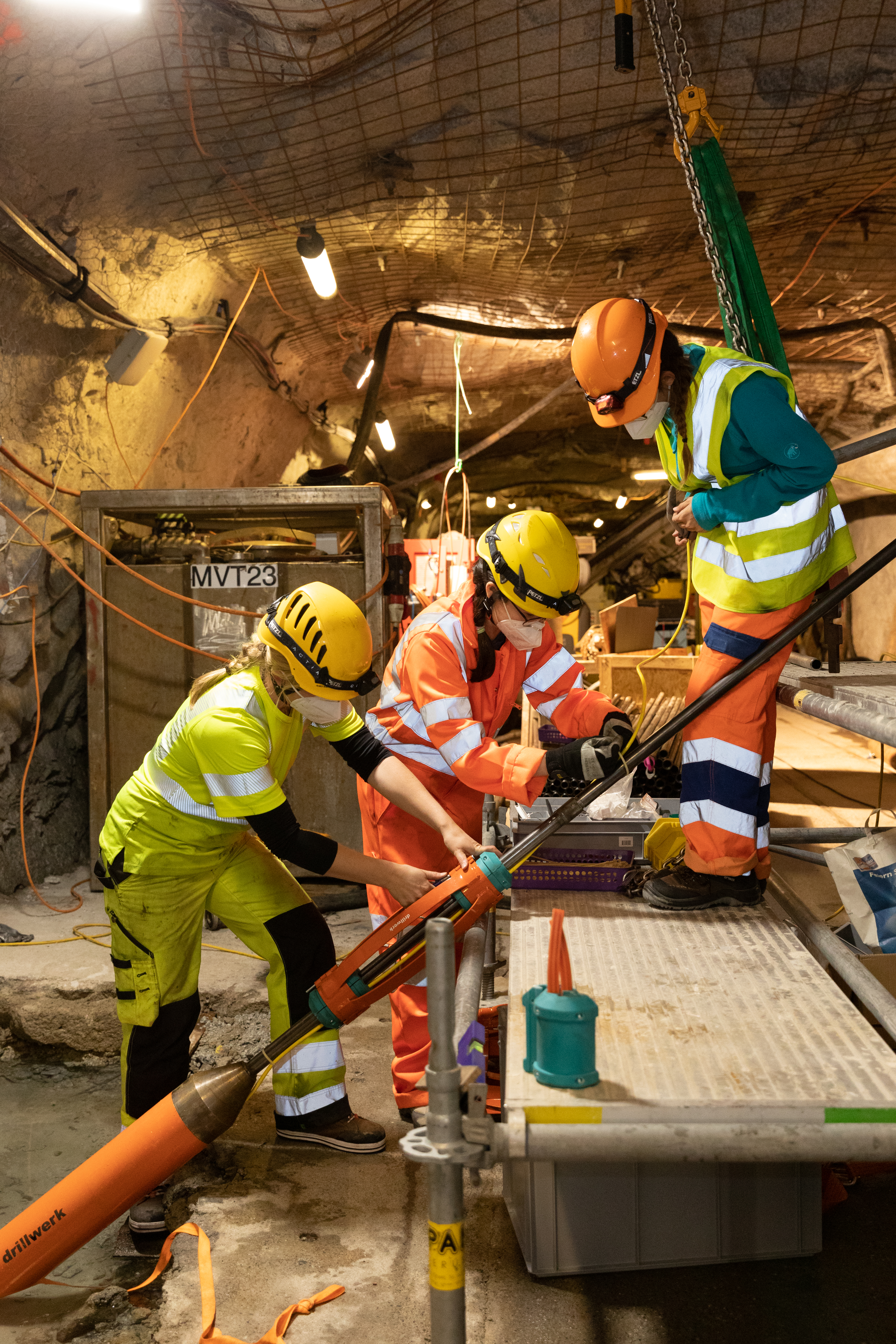2020-11-06
November 2020 - Stimulations start
After many months of preparations, one of the project partners, GeoEnergie Suisse AG (GES), is now ready to start the first full-scale stimulations in the Bedretto Lab. These stimulations are part of a European Research project DESTRESS that aims at demonstrating so-called soft stimulation techniques for creating a heat exchanger in the underground and extracting geothermal energy.
By injecting a few tens of cubic meter of water into the rock under high pressure, GES aims at creating a network of small fractures that connect the two experimental boreholes. This process triggers very small earthquakes. Eventually, water can then circulate through numerous tiny fractures from one borehole to the other and gradually heat up on its way.
GES has chosen the Bedretto Lab to demonstrate the concept of multi-stage stimulations that they are purposing to use for commercial geothermal plants. To conduct multi-stage stimulations, the borehole is temporarily divided into different sections or stages, which are stimulated separately. GES hopes to have more control on the reservoirs properties by applying this method and to limit the seismic risk.
For all activities in the Bedretto Lab, safety is the top priority. For this reason, ETH Zurich has conducted an extensive seismic risk study to evaluate the chance of damaging earthquakes in consequence of these stimulations. The chance of such earthquakes of magnitude 2 or 2. 5 to occur is estimated to be about 1 in 10 Million. A dense monitoring system has been installed to closely monitor the stimulations. Its data will feed into a set of so-called Traffic Light Systems defining criteria to stop any activity in case certain thresholds are exceeded. They take into account the observed vibrations, the magnitudes of induced events, and the pressure build-up on a nearby fault. One such predefined criteria would be an earthquake of a magnitude of 0.5 or bigger, which would lead to an immediate stop of any ongoing activity.
Besides relying on such predefined thresholds used for classical Traffic Light Systems, a specific goal of the project is to demonstrate and test more sophisticated approaches. To this end, Advanced or Adaptive Traffic Light Systems are implemented taking into account real-time data during the stimulation and assessing whether a stimulation can continue (green), has to be paused (yellow) or must be stopped (red). In addition, we will update the risk assessment after having injected 5m3 of water and decide about the continuation of the stimulations. This process will be repeated after each stimulation of one of the borehole stages.
2020-08-11
July 2020 - Completion 3
Monitoring boreholes were instrumented with geophones, high-frequency accellerometer, piezoelectric In-situ Acoustic Emission (AE) sensors, AE-accelerometer sensor chains, ultrasonic transmitters, Fiber Bragg Grating (FBG) sensors, fibre optic cables, rod system with centralizers, tiltmeters, pore-pressure sensors and mulitpacker. These instruments will monitor the rock volume during fracture generation and water circulation.


